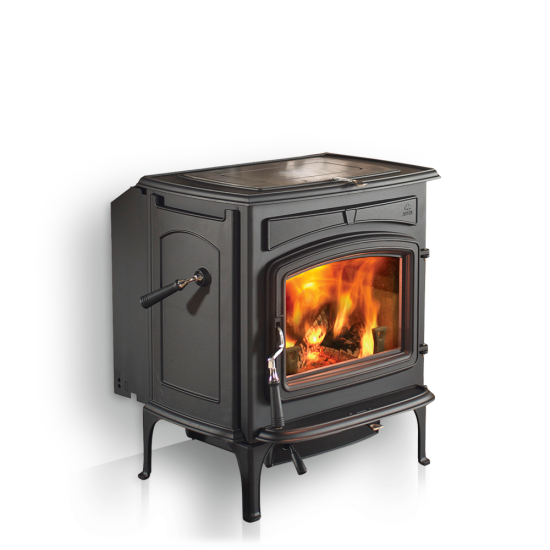Hugh,
Our home is located in NW Wyoming, at an elevation of just under 6,000 feet. We have operated both a coal stove (Hitzer Model 30-95 EZ-Flo Hopper Stove) and a wood burner (Blaze King Princess Catalytic Model) for a number of years. The wood stove is on the lowest level of our three-story log home, while the coal stove provides emergency heat for our storage/pantry building.
Over the years, we have learned a great many tips and techniques for using solid fuel heaters. The most important step in installing and using one of these stoves is to get the advice and help of a qualified chimney and stove installer. After hiring a couple of “experts” who had no idea what they were doing, we were fortunate to contact one of the best outfits in NW Wyoming. He corrected the glaring and dangerous mistakes of the bumblers and installed both of our stoves. He used Selkirk “Ultra-Temp” stainless steel insulated pipe with a rating of 2,100 degrees on the exterior sections and double wall chimney pipe for the interior location. To deal with draft issues, he installed “Vacu-Stack” chimney caps. And, since there are very few “chimney sweeps” in our area, we purchased a chimney-cleaning kit made by Wohler and imported from Germany. (It’s expensive but built like a Tiger Tank.)
The installer gave us some expert advice in how to burn solid fuel safely and efficiently. For the wood stove, he installed a thermometer through the double-wall pipe, rather than use a magnetic mount. He advised us that at least monthly to crank the heat up to bring the stack temperature to 1,200 degrees. This, he said would greatly minimize the formation of creosote. He further advised us to “burn hot”… keeping the stack temp at a minimum of 600 degrees. On windy days, he said to crack open a window on the windward side (the side facing the direction the wind is coming from). This helps to overpressure the house and help drive gases up the stack. Keep other doors and windows closed. We have followed his advice and found no fault with his suggestions.
The Hitzer coal stove can burn either Anthracite or Bituminous coal, but it does so in a different fashion. For Anthracite, it utilizes a 30-pound hopper designed for nut-sized coal. If burning Bituminous, the hopper is removed and large pieces of lump coal can be utilized. We make a trip back East every of couple years and bring back a few tons of “Blaschak” Anthracite coal from Pennsylvania. There is a mom and pop coal mine a few miles from us that sells chunk Bituminous. Using the Anthracite is much easier, cleaner, and efficient, with the coal burning almost completely free of smoke and smell. The hopper allows 12 to 18 hours of unattended heat. Keeping a coal stove going isn’t difficult, and I learned all the tricks by watching a few of the YouTube videos on the subject. The biggest caution is to keep the ashbin emptied, as you will burn out the grates if the ash bin fills up and restricts the flow of cooling air through the grates.
We are fortunate in being connected to natural gas, but during power failures or extreme weather, we are very glad to have the backup heat provided by wood and coal. – W.D.










